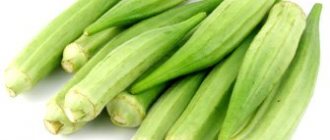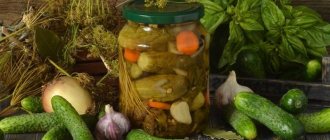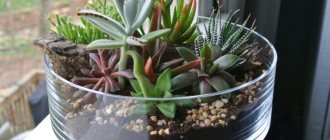Roses, climbing varieties, occupy a leading position in vertical gardening.
They are indispensable when erecting decorative columns, creating flower arches, and decorating green facades of buildings.
It is advisable to grow them in warm areas of the country, where there is no need to cover the plants for the winter.
In this article, we’ll look at the photo to see what this rose variety looks like, and we’ll also learn how to properly care for them.
Description
Climbing rose Jasmine (Jasmina) is a bright representative of its subspecies. The plant blooms profusely. The inflorescences are double, bright pink, closer to lilac or lavender. The reverse side of the petals is dark pink. The buds are dense, with 75 petals each. The shape of the inflorescences itself is cup-shaped. Their diameter is approximately 10-15cm.
The leaves are deep green in color, medium in size, dense, and have a glossy surface. A powerful bush with strong, prickly shoots. The lashes are thin, they have clusters of flowers of 7-10 pieces, which elegantly sag under their own weight. The height of the bush is 2.5-3 meters and the width is 1 meter. Jasmine rose blooms abundantly, long-lasting, and in stages. The variety is resistant to diseases, rain, and heat. Frost resistance zone 6.
Below you can see a photo of a Jasmine rose.
Volumetric buds
Lovers of large and impressive sizes will appreciate garden jasmine, which has beautiful and lush flowers. In addition, the stem of this specimen can reach 10 meters in length, which will be of interest to owners who have large flower beds and greenhouses.
With the help of one stem you can fill a good space in a flowerbed, and using your imagination you can weave entire masterpieces from it. The green mass is quite beautiful, this is due to the pinnateness of the leaves located opposite each other.
The shape of each specimen has an elliptical appearance and a dark color, which significantly distinguishes this variety. When they bloom, the flowers resemble umbrellas and are quite large in size; 10 beautiful buds can form on one top.
History of origin
The breeding production of W. Kordes Sohne is considered a family business, the founder of which is Wilhelm Kordes. A former sailor founded a company in 1887 that was engaged in growing and selling roses. However, after the end of the First World War, he reconsidered his views, re-reading many books on rose breeding, and began to breed his own varieties.
The hybrid, obtained at random, had super hardy characteristics and was resistant to diseases. This variety became the ancestor of a large class of climbing roses and was named Kordesii. Years later, Wilhelm's son continued his work and became the author of hundreds of varieties. The climbing rose Jasmine (Jasmina) was also bred by a German breeding company in 2005.
Bloom
The budding period of this beauty begins at the end of May , beginning of June. The first flowering lasts about a month and a half. There are many inflorescences, all open fully. In sunlight, the color fades a little and fades. Throughout the entire growing season, new shoots grow and buds immediately appear on them. At the end of August, closer to autumn, the time for the second flowering comes. It's not as lush as the first one. Individual brushes open. Lasts about two weeks.
Care before and after
Caring for a climbing rose before flowering involves systematically loosening the soil, removing weeds, fertilizing, and pruning.
In the spring, they are fed with nitrogen fertilizers to enhance growth, and closer to the time of budding, potassium fertilizers are used. After flowering, the climbing rose must be properly pruned. Remove dry inflorescences, dead, damaged vines, if there is a need to thin out an overgrown bush. Afterwards, feed the plant with potassium-phosphorus mineral fertilizer.
After autumn flowering, one or two flowers are left on each vine so that the fruits begin to form . Thus, the shoots will survive the winter better, gain strength, and bloom profusely next year.
What to do if it doesn't bloom?
There are many reasons for the lack of flowering, for example as a result of:
- improper pruning;
- poor soil quality;
- excess nitrogen fertilizers;
- unsuitable landing site;
- bad wintering.
To restore flowering, you need to determine the cause and take appropriate measures.
Frequently asked questions from beginning gardeners
Every gardener starts with trial and error. Therefore, advice from experienced people is important and valuable.
Why doesn't jasmine bloom?
Jasmine is so loved by gardeners for its fragrant blooms. But it happens that the bush does not bloom for a long time. The following factors may be the reason:
- young age of the plant;
- lack of lighting;
- lack of fertilizer and soil depletion;
- freezing of shoots in winter;
- incorrect and deep planting in open ground.
Are you growing garden jasmine?
Yes
No
Step-by-step care instructions
Rose Jasmine (Jasmina) requires certain cultivation measures , which subsequently affect growth and flowering.
Place
The most central place in the garden is suitable for the queen, so that she can be seen from everywhere. Roses love light, but if they are exposed to the sun all day long, they will quickly fade. Therefore, it is advisable to choose places where the flower will be in the shade for half a day. It is not recommended to plant roses in lowlands, as there can be stagnation of water and air, which can provoke the development of diseases.
What should the soil be like?
Flowers grow well in fertile, loose, light soil. Heavy, clay soil is not suitable. Sandy lands are also not suitable for growing climbing flowers, due to their infertility and lightness. To obtain the desired result, the planting soil should be diluted with peat, sand, and compost. The optimal soil pH is 5.5-6.5. The root system of the Jasmine rose is well developed; it goes deep underground. Therefore, it is very important to know the groundwater level in the area.
Landing
The most suitable period for planting with bare roots is considered to be spring or autumn . Flowers in containers can be planted at any convenient time when the outside temperature outside the window is positive.
The cuttings are planted correctly so that the neck is 3 cm below the ground level, which protects against drying out or freezing. Place the bushes at a distance so that they do not interfere with each other. The transplantation procedure must be carried out in calm, cool weather, preferably in the evening. Afterwards, the new plant should be watered, a sufficient volume of 20-30 liters.
Temperature
Rose Jasmine is a frost-resistant variety and can therefore withstand temperatures as low as -23°C. In summer, the maximum parameters are +35-40°C, but they adversely affect the condition of the plant. Flowers look depressed, leaves curl. The optimal temperature range is considered to be +20-25°C.
Watering
In dry moments, be sure to water about 15-20 liters per bush with non-cold water. If there is no rain for a long time, it is worth moisturizing the rose twice a week. With the onset of autumn, watering should be minimized and completely removed by the end of September.
Trimming
For Jasmine, spring pruning is recommended, which involves removing dry, damaged or fattening vines, as well as thinning or shaping the crown. In addition, pruning helps to obtain uniform coverage of the object next to which the rose is planted. First of all, this process is aimed at the development of new vegetative shoots, because inflorescences appear on last year's shoots.
How to tie up plants?
Another important point regarding climbing roses is tying. However, this is impossible without special support. It is important to build a structure for climbing flowers, thanks to which they will develop correctly. Supports can be in the form of: arches, mesh, cone-shaped structure. Climbing shoots are attached to them using small ropes.
Transfer
An adult plant needs to be replanted if the previous location is not suitable for some reason. It is recommended to perform it in early autumn, until the roots begin to adapt to the cold , or in early spring before the buds appear. For this you should:
- Carefully dig a hole and carefully remove the flower.
- Inspect the root system and leave healthy, dense shoots; remove excess shoots with pruning shears.
- When planting a plant, it is necessary to straighten the roots in the new hole so that they do not stick up.
- Then cover with soil and water.
Preparing for winter
The climbing rose Jasmine (Jasmina) requires obligatory shelter for the winter . However, no action needs to be taken until stable cold weather arrives. The flower can withstand air temperatures down to -7°C. In addition, slight frosts only help the bush adapt and harden.
- They put boards and foam plastic on the ground, and then bend the bush down, pinning it with pegs.
- Flowers are usually covered with spruce branches or pine needles.
- At the beginning of spring, the side doors are opened slightly for ventilation.
Step-by-step instructions: how to propagate?
Rose Jasmine (Jasmina) reproduces vegetatively. This is the only way to achieve preservation of all varietal qualities.
- After the first flowering in the summer, cuttings are prepared.
- You need a young, thick shoot with 2 internodes.
- Using a sharp knife, make the lower cut at 45°, and the upper one straight above the kidney.
- Deepen the cuttings 1 cm in wet sand, cover the top with a jar or polyethylene.
- Leave it like this until the roots appear.
Diseases and pests
Based on the observations of experienced gardeners, we can say that the Jasmine rose (Jasmina) is practically not susceptible to disease ; it can withstand frost and other adverse weather conditions. The only thing that can provoke a painful condition is aphids. These are small sucking insects that can be dealt with using a soap solution or any insecticide preparation.
Climbing rose Jasmine (Jasmina) is a variety of so-called “nostalgic roses”, created in the style of popular English subspecies. The luxurious rose bush surprises not only with its appearance, but also with the incredible aroma of jasmine. With proper care and a good planting location, the plant can live for decades.
If you find an error, please select a piece of text and press Ctrl+Enter.
Climbing roses are some types of rose hips and varieties of garden roses with long creeping or hanging shoots. These roses are distinguished by a variety of varieties and hybrid forms: there are varieties that bloom once a year, as well as remontant, small-flowered and large-flowered, climbing, climbing, semi-climbing. Today, climbing roses occupy one of the leading places in the field of vertical gardening.
One of the most popular subspecies is the climbing rose Jasmine.
Characteristics and features of the variety
Jasmine (Jasmina) rose is a branched shrub reaching an average height of 2 m. In regions with low temperatures, the growth of the bush at best is 1-1.5 m, but in the south of Russia the Yasmina rose, with good care, grows up to 3 m. The diameter of the plant is about 1-1.2 m.
On a note. This variety is grown mainly in areas with a mild, warm climate, but the frost resistance of the variety is relatively high - Jasmine roses can withstand frosts down to −23 ° C.
The hybrid blooms profusely (2 times per season), and the flowering is greatly extended over time. The first buds appear on last year's shoots in June
Important! In the first year of life, the plant does not bloom.
The leaves of the bush are dark, smooth, shiny, densely located on the stem. The shoots are very prickly and tough.
The flowers are painted in a soft pink lavender tone. When fully opened, the Jasmine rose buds resemble small cups in appearance. The petals are densely double. The diameter of the flowers is 6-7 cm. They form inflorescences of 8-14 pieces.
The variety is especially distinguished by its light, sweet honey aroma, in which notes of apple and vanilla are clearly felt. In 2007, the Yasmina rose won a prize for a unique scent in the Knight rose competition (France).
The description of the variety also emphasizes its resistance to many diseases.
Agricultural technology
The rules for planting Jasmine bush roses and subsequent care of the plant are not particularly complicated. The variety is not picky about the type of soil, and also does not require frequent fertilizing and pruning. One of the few weaknesses of the hybrid is its vulnerability to strong winds, which is why it is not recommended to plant it on the corners of buildings.
Lighting requirements
When choosing a place for planting, you should focus on moderately shaded areas. In open sun the bush may burn, but in diffused light the plant develops just as well as in partial shade.
Good place to grow
Soil quality requirements
Rose Jasmine grows well in almost all types of soil, however, clay or light sandy soil will not be amiss to fertilize with humus or peat. The plant also does not take root well in swampy, waterlogged soils. The most favorable site for planting this variety is slightly acidic fertile soil.
Watering
The variety is considered quite drought-resistant, but during particularly hot periods watering is required. Each bush requires an average of 20 liters of warm, settled water. Optimal watering frequency: 2 times a week in conditions of prolonged drought. In August, plants are watered less frequently, and with the beginning of autumn, watering is stopped altogether. It is also not recommended to water roses in rainy weather, as increased soil moisture can provoke the development of fungal diseases.
Landing algorithm
The Yasmina rose is usually planted in late September - early October. In areas with cold climates, the variety is planted in the spring (April - May). This way the seedlings will have time to take root before the first frost.
Important! Before planting, you can soak the plants overnight in a solution with the addition of a growth stimulator. This way the root system of the bushes will take root faster.
When planting a plant, you should adhere to the following recommendations:
- The depth of the planting hole for the bush should be 50-60 cm deep, diameter - 50 cm.
- A small peg (80-100 cm high) is driven into the bottom of the hole, which will serve as a support for the seedling, after which the hole is covered with a drainage layer of gravel or small pebbles. Optimal layer thickness: 8-10 cm.
- Organic fertilizers are poured over the drainage layer - you can use rotted manure or compost, also in a layer of no more than 10 cm.
- A small mound of the top fertile layer of soil is laid out on a bed of fertilizer, on which the seedling is then placed. When deepening a bush, it is not placed perpendicular to the ground, but at an angle of 30° to the support. The root collar should rise above the soil level by at least 3 cm.
- The hole is covered with earth and lightly compacted, after which it is watered abundantly right to the root, avoiding moisture getting on the leaves.
- The planting procedure is completed by mulching the root area of the soil with peat.
Formation of bushes
Rose Jasmine does not require regular pruning, so the procedure is purely cosmetic. The plant is usually pruned in the spring, when the first buds swell. On average, 5 buds are left on each shoot. Otherwise, caring for the plant comes down to loosening the soil and removing weeds around the bush.
Top dressing
Fertilizing the bush is not necessary, but the variety responds well to fertilizing. It should be borne in mind that in the spring the rose is fed with nitrogen for better growth of green mass, and in the summer with potassium and phosphorus.
Feeding with potassium and phosphorus
Shelter for the winter
Despite their high frost resistance, roses must be covered for the winter, but there is no need to rush into this. You can skip the first frosts - they cover the bushes only with the onset of constant cold weather.
Note! Preparing for winter shelter involves lightly pruning plants and mulching the soil. It is not recommended to use sawdust or sand as mulch. The Jasmine variety tolerates waterlogged soil worse than frost, and this material allows water to pass through well, so it is better to use humus or compost when mulching.
The next step is removing the supports. The bush is bent to the ground, placing spruce or pine branches under it. An arched frame is installed above the rose, onto which any suitable covering material is stretched.
Reproduction
The Jasmine variety is propagated by cuttings. Cuttings are prepared from young but strong plants after the first flowering. Before planting, a standard is formed from rose cuttings.
Room temperature
Jasmine is not so demanding regarding this indicator, but it is still worth paying attention; the optimal differences on the thermometer are considered to be 21-25 degrees. During the cold season, numbers that drop below 16 degrees in the room will be critical; this can lead to irreversible consequences.
During the winter, different varieties of this flower are kept under special conditions, so preparation of the place for the plants begins in advance. To achieve the most effective flowering, all nuances must be strictly observed, otherwise this process will be short and sparse.
Advantages and disadvantages of the variety in comparison with other varieties
The following advantages of Jasmina rose are highlighted:
- large size, branching and tall bush - thanks to these characteristics, the variety looks good when creating vertical spatial compositions;
- abundant and long flowering;
- unusual aroma mixed with apples and vanilla;
- decorative cup-shaped buds;
- high frost resistance;
- relative unpretentiousness;
- moderate drought resistance;
- endurance and immunity to diseases such as powdery mildew and black spot - the Jasmine rose rarely gets sick.
The disadvantages of the hybrid include vulnerability to heavy rains - heavy drops can crush the buds and leaves of the plant. However, the variety doesn’t care about “mushroom” rains.
Today, the climbing rose Yasmina occupies one of the leading places in vertical gardening - the branched bushes of the variety combine well with small architectural forms. Also, Jasmine roses are indispensable when creating decorative columns, pyramids, arches, trellises, green decoration of building walls, balconies, and gazebos.
Climbing roses have long occupied first place in landscaping. In addition to luxurious buds, flowers fill the space with a subtle pleasant aroma. One of these incredibly beautiful and fragrant varieties of roses called Jasmine will be discussed in our material.
climbing vine
The variety that came from the tropics has about 300 species and each of them is beautiful and unique in its own way; photos of jasmine are literally mesmerizing. The evergreen plant is used for landscaping greenhouses and creating entire landscapes thanks to its climbing features.
An adult can reach from 1 to 10 meters in height; such impressive dimensions are not always suitable for small spaces. The branches are quite flexible and clinging, this allows you to easily decorate the spectacular structure at your personal discretion.
Description and characteristics
A powerful, leafy bush with a deep and well-developed root system stretches along the support up to 2 m in length. Thin flexible lashes with thorns form a compact crown up to 1 m in width. The leaves are oval-shaped, with a carved edge and a sharp tip. The leaf blade is divided by a central vein. The surface of the leaf is glossy, dark green in color.
Each flowering cluster produces up to 15 flowers, large, up to 10–12 cm in diameter, double. The flower is densely packed with up to 70 petals. The color of the petals varies from soft pink to lavender. The cup-shaped flowers have a strong, but not heavy, pleasant aroma: some smell the scent of jasmine or lilac, while others detect notes of fresh green apple.
History of origin
The creators of the Jasmine rose are the breeders of the German family enterprise for the selection of garden roses W. Kordes Sohne. The variety was bred in 2005, and 3 years later, Jasmine was awarded a gold medal at the international flower competition.
Distinctive features of the variety
One of the main advantages of this variety, unlike many others, is its repeated flowering. The first period begins in May and lasts about a month. The bush is literally dotted with inflorescences forming mini-bouquets. The second period begins in August and lasts up to 2–3 weeks, however, only individual brushes bloom. The distinctive ability of the variety is its resistance to shade and cold. Where other varieties begin to get sick and refuse to bloom, Jasmine shows enviable durability and even more luxuriant flowering.
Filling with flowers
Jasmine is perfect for home use when planted in a small pot, and the appearance of a multi-flowered specimen will effectively hide the container when the buds open.
The distinctive features of this plant can be safely called strong branching and a possible height of an adult stem of up to 2 meters. The leaves of this variety will have wavy edges and a dark green surface color, which will strikingly distinguish it from other nearby growing individuals. The highlight will be the blooming flowers, of which there are a lot, and the aroma they emit is impossible not to feel.
Features of planting and growing
Despite its resistance to low temperatures, Jasmine is afraid of strong and gusty winds, so it should be planted in an area protected by buildings. A slope would be a good solution. When planting, you should take into account the location of groundwater. The root system of the variety goes 2 m deep, so groundwater must run even deeper so as not to flood the plant.
The best time for planting will be September: the bush will have time to adapt for the winter. Several plants are planted at a distance, taking into account the width to which the bush subsequently grows. When planting, the growth point is buried 3 cm from the soil surface. After planting, the plant is watered, spending up to 30 liters of water per bush.
Lighting requirements
The rose demonstrates ideal development when alternating bright light with shadow. When choosing a place for planting, preference is given to an area that is illuminated by the sun until noon. Constant exposure to direct sunlight will cause the delicate petals to burn out and reduce flowering.
Soil quality requirements
The ideal soil composition should be light, loose and nutritious. Acidity indicator - 6–6.5 pH. Too light sandy and sandy loam soils make it heavier.
Add to the soil:
- turf land;
- rotted manure;
- peat;
- lime.
Heavy clay soils also require correction; they are diluted by adding:
Preparing the bush for winter
Winter is the hardest time for delicate jasmine . In order to protect your shrub from the cold and prevent it from dying irrevocably, you will need to carry out a number of special works every year. They won't take up much of your time.
Sheltering the plant for the winter
Here's what you need to know about preparing jasmine for winter:
If you are planning to “relocate” a shrub to a new location, then it is best to do this at the end of spring.
Jasmine rose care
Caring for the plant consists of standard procedures for watering and fertilizing, as well as pruning. To ensure vertical growth, you should immediately take care of support.
Watering
Water for irrigation should not contain impurities from the main line, its temperature should not be lower than +18°C. Young specimens need watering twice a week, adult bushes - once. If the weather is too hot, reduce the interval between waterings to prevent the roots from drying out. In total, one bush consumes up to 20 liters of water. By the end of September, watering is gradually reduced.
Fertilizer application
The first fertilizer is applied during planting at the rate per 1 m²: 8 kg of humus, 20 g of superphosphate and potassium salt, 200 g of wood ash. As the bush develops, fertilizing is applied as follows:
- at the end of May, nitrogen composition is added: 20 g/1 m²;
- at the end of June - nitrophoska: 20 g/1 m²;
- in July, the bushes are sprayed with magnesium sulfate: 20 g/10 l of water;
- in August - superphosphate (40 g) and potassium salt (20 g/1 m²).
Trimming
Every year in the spring, pruning is carried out before the sap begins to flow. Remove weak and frozen shoots and dry branches. Cut at an acute angle to the 5th–6th bud located on the outside of the branch. In the fall, damaged or weak branches are also removed, and in addition to them, the bush is thinned out. Remove unpromising canes or those that escape the crown. Manipulations are carried out with a sharp, disinfected instrument.
Transfer
Garden roses usually grow in one place their entire life, depending on the variety this can last 20–25 years. A transplant may become necessary if the site is unsuitable for some reason. Another reason may be to save the plant from disease. It is recommended to carry out the procedure at the end of summer, until the plant begins to prepare for winter, or in the spring before sap flow begins.
The transplant technology is as follows:
- Dig around the tree trunk and carefully remove the plant.
- Remove damaged or dried root shoots. Treat the sections with crushed activated carbon.
- Prepare the area for planting: apply fertilizer (the components are described above).
- When planting, straighten the roots of the plant and fill the hole with soil.
- Gently compact the soil and water.
Video: how to transplant a rose
How to prepare plants for winter
If the bush has grown sufficiently, it must be removed from the support and bent to the ground. The trunk is usually hilled to a height of up to 40 cm. It is advisable to trim the foliage. Roses are covered with agrospan or other covering material. In particularly cold climates, plants are additionally covered with pine needles, and after snow falls, they are thrown over the pine needles.
Watering
The plant is not particularly drought-resistant, so in the hot summer, water it every day or two. When a crop lacks moisture, its foliage will quickly wilt. If it rains frequently, watering once or twice every seven days will be enough; pour two or three buckets of water into the circle around the trunk.
Remove weeds and loosen the soil around the crop after watering. Save your energy and mulch the surface of the earth in the circle around the trunk with shavings or straw. This technique can help you reduce the amount of watering.
Watering green garden with outdoor hose
Reproduction methods
All varietal characteristics of Jasmine can be preserved only by propagation by cuttings. The time for the procedure is the period of bud formation. The material used is annual, developed, moderately thick shoots, cutting them at an acute angle from semi-lignified flowering vines. A cut is made above the bud at a distance of 1 cm; cuts on the parent shoot and cuttings are treated with charcoal.
Rooting technology:
- The lower cut of the cutting, which will take root, is treated with a growth stimulator (Epin, Zircon).
- The soil is shed with a slightly pink solution of potassium permanganate.
- The seedlings are buried 2 cm at an angle, forming rows with a distance of 10 cm, between cuttings - 6 cm.
- The seedlings are covered with a glass or plastic greenhouse on top.
- The container with future roses is placed in a warm place (+22…+25°C), with a humidity level of 80–90%.
- The earth is not watered, but moistened by spraying. Ventilate the greenhouse regularly.
- When the first leaves appear, the plants are hardened off by removing the cover with a gradual increase in time.
- A rooted seedling with developed leaves is transplanted to a permanent place.
Video: how to root a rose
Difficulties in growing
If all the conditions for choosing a suitable site are met, the watering and fertilizing regime is followed, then there will be no difficulties when growing a rose bush. However, there are unforeseen situations due to which the bush may become sick or be attacked by pests. Main problems and methods for solving them:
- Rust - bright orange spots on the inside of the leaf and brown-orange on the outside. Fungal disease can be prevented by regularly spraying the bush during the growing season with Bordeaux mixture (100 g/10 l). Treatment at all stages of development is carried out with the biological preparation “Alirin-B”, watering the area around the bush with a solution in the proportion of 2 tablets per 10 liters of water.
- Black spot - dark spots on leaves with a yellow border. As a preventative measure, spray with copper sulfate (1%) in the spring. To treat the disease, the biological preparation “Baktofit” is used, the solution of which is watered on the bush in the proportion of 3 ml/1 liter of water.
- Aphids, thrips — the drug “Akarin” is effective against insects. For aphids, use a spray mixture in the proportion of 6-8 ml/1 l, for thrips - in the proportion of 8-10 ml/1 l of water.
The Jasmine rose variety is ideal for vertical gardening. Its cultivation is simple, and caring for it is not difficult. It is also noteworthy that freshly cut flowers last in a bouquet for up to two weeks.
Application in landscape design
This variety is ideal for vertical gardening. Jasmine roses can be used in the garden both in single and group compositions, as well as for decorating gazebos, arches and the main entrance to the house. Its beauty can be successfully emphasized by conifers and decorative deciduous shrubs. This rose can also be used to create complex multi-level flower beds, placing low-growing types of crops in the center and on the sides. The main thing is to take into account the compatibility of shades.
The Jasmine variety rose is also suitable for creating “living” flowering hedges, since in many regions of the country it can be grown without shelter for the winter.
When planted in the shade, the decorative quality of the variety decreases











